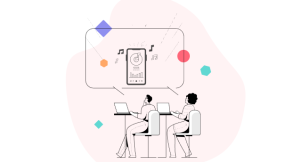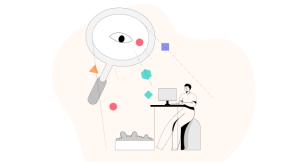As people review their consumer habits and patterns, an era of responsible consumption begins. The app market evolves together with the customers who are showing less interest in new apps but spending more money on the ones they like. Add Goggle’s mobile-first indexing rule here, and it becomes apparent that we are bound to make changes in how we develop new services.
The mobile app development industry is fiercely competitive and constantly evolving at breakneck speed. Its sustained increase in popularity can be attributed to its promise for personalization and convenience across various sectors, such as healthcare or finance. The mobile app market is projected to grow significantly by generating more than $781 billion by 2029.
Utilizing the full powers of AI, personalization, AR/VR, and other trends and technologies allows us to create truly useful and indispensable apps that users will be happy to purchase. Here are the latest 20 trends in modern app development that developers are encouraged to adopt in 2025.
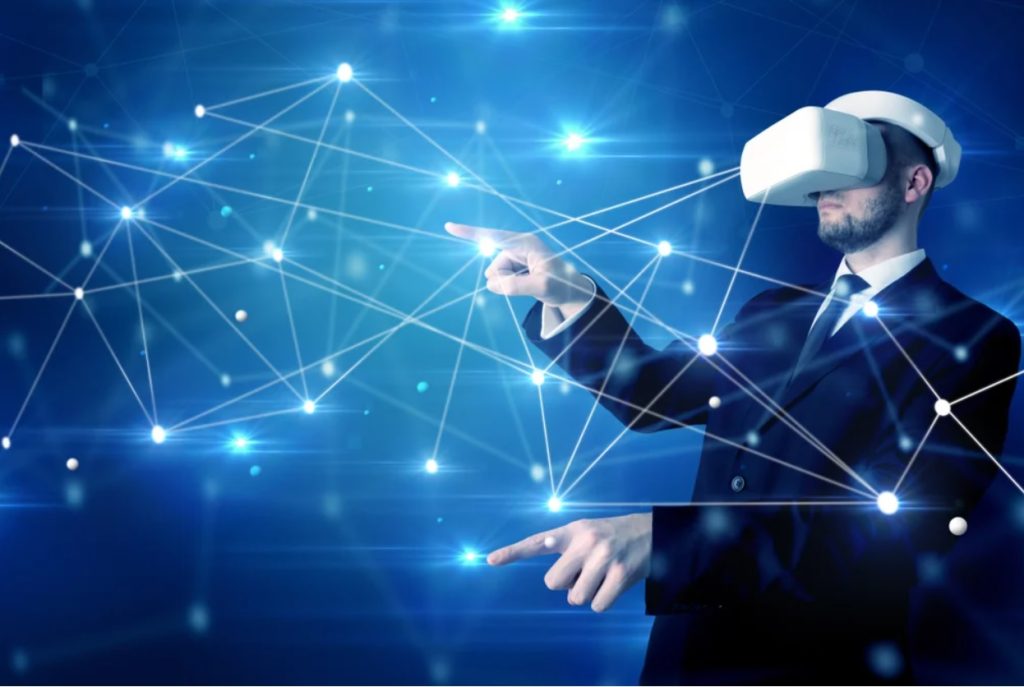
Choosing a reliable developer
to create your innovative mobile app?
Share your project details with Weelorum and
claim your free strategy session
Contact us
1. Artificial Intelligence for Hyper-Personalized, Automated Experiences
Artificial Intelligence is no longer one of the trends in mobile app development. Its transformative force is reshaping the mobile app industry, and its market volume is growing exponentially. In application development, it’s not only used for functionality and usability – it can already predict user behavior, anticipate customer needs, and create new dimensions of personalization.
Benefits of Implementing AI Into Mobile App Development
- Predictive analytics for highly targeted content. AI uses predictive analytics to process user behavior patterns and forecast emerging or changing trends. Based on this info, they can offer highly personalized content to users that resonates with them on a personal level.
- Intelligent automation of development processes. AI accelerates app development by automating routine tasks, such as code generation, testing, and debugging. This decreases the workload of the development team, allowing them to concentrate on strategic work.
- NPL capabilities and sentiment analysis for human-like interactions. Natural Language Processing (NLP) allows apps to interact with users conversationally. NLP-powered apps understand the context, tone, and intent behind user input, and mimic human communication with remarkable accuracy.
Implementations
- Predictive analytics is often used in e-commerce apps. For example, Amazon and Shopify use AI to predict product preferences. Similarly, streaming platforms like Netflix and Spotify create dynamic recommendations tailored to individual tastes.
- GitHub Copilot and AI-driven IDEs use intelligent automation to accelerate the workflows, helping developers focus on innovation rather than tedious operations.
NLP technology drives real-time sentiment analysis to adapt responses based on user mood. For instance, wellness apps like Wysa use it to provide empathetic, therapeutic interactions.
2. ML Intelligence Systems for Predictive Analytics
Machine learning focuses on developing algorithms that help systems learn and evolve based on the learning experience without explicit programming. As part of AI, ML enables smart systems to learn from historical data and improve their predictive accuracy. This technology enhances AI-based assistants without the need for specific programming. Basically, it allows AI to learn and improve based on all the submitted user data.
The market is continuously growing, with a projected 135% increase in AI/ML tool users by 2030.
Benefits of Implementing ML into Mobile App Development
- Personalized user experiences. ML algorithms analyze user preferences, behaviors, and historical patterns to deliver personalized content.
- Improved efficiency and automation. ML automates repetitive tasks, optimizes processes, and makes intelligent predictions. It can also run predictive maintenance to identify when the equipment should be serviced.
- Deep data analysis & insights. Implementing intelligence ML algorithms is a powerful tool for assessing large datasets. With the ability to pinpoint critical information by identifying patterns or trends, companies can make decisions based on sound analysis, improving business operations significantly.
Implementations
- ML-powered recommendation systems are widely used to enhance user experiences in e-commerce apps like Amazon and eBay, content streaming like Netflix, and social media apps like TikTok and Instagram.
- ML-based chatbots can understand user queries and provide assistance. ML improves chatbot accuracy, enabling natural, context-aware interactions. For example, Zendesk and Drift chatbots use ML to provide instant and contextually relevant support.
- Predictive Analytics is often used in the travel industry. ML enables travel apps to forecast prices, identify trends, and provide recommendations to users. For example, Tripadvisor and Expedia suggest accommodations, attractions, and activities based on user interests and preferences. Travel fare aggregators like Momondo use it to predict airfare trends and notify users when prices are expected to rise or drop.
3. Immersive AR/VR Non-Gaming Apps
If the early association with Augmented Reality (AR) and Virtual Reality (VR) technologies was gaming, now these technologies are moving far beyond this field. These days, it’s more about adding interactive digital elements to real life or creating a fully immersive experience.
Today, AR and VR have practical applications across various fields. For example, VR is used in medical training to simulate surgeries, while AR is applied in industrial settings to guide workers during complex tasks.
Benefits of Implementing AR and VR into Mobile App Development
- Immersive user experience and increased interaction. AR and VR in apps create highly engaging experiences that combine the real and digital worlds. Users can interact with virtual objects or environments in real time, fostering deeper engagement.
- Revolutionary marketing and product visualization. These technologies revolutionize marketing and product visualization. They enable users to try on virtual clothes (Farfetch), and makeup products (Sephora Virtual Artist), and even check out how well the furniture will fit into a home setting (IKEA Place).
- Cost-Effective Prototyping. AR and VR facilitate virtual prototyping, enabling businesses to test and refine their products before physical production. This not only reduces manufacturing costs but also speeds up the design cycle.
Implementations
Employee training can also leverage AR & VR. It reduces training costs and enhances learning experiences in a risk-free environment.
Using VR, mobile apps like Google Arts & Culture can provide virtual tours of locations, museums, or real estate properties, offering users an immersive experience. VR can also be used for storytelling, immersive narratives, or educational content.
AR and VR are also used in medical settings — for example, to study the patient’s data or provide real-time assistance for medical procedures. AccuVein uses AR to help locate veins for intravenous injections by displaying the veins on a patient’s skin through the camera view.

4. IoT Integration with 5G
The integration of IoT with 5G technology takes this technology to the next level since IoT systems can now transmit large volumes of data in real time. It unlocks a plethora of possibilities for healthcare, smart homes, and transportation. Mobile app developers can design apps that offer connected, automated, and more intelligent UX.
Benefits
- Scalability and device density. 5G networks can support a higher density of connected devices within a given area compared to their predecessors. This means that businesses can scale their IoT infrastructure more effectively, without worrying about network congestion.
- Improved efficiency. Being energy-efficient, 5G networks help prolong the battery life of IoT devices. This is particularly valuable for devices that need to run continuously without frequent charging, such as wearables, smart sensors, and remote monitoring tools.
- Better network reliability. 5G provides improved reliability, meaning that IoT devices can stay connected more consistently. This is essential for applications where constant, uninterrupted service is needed, such as in industrial control systems, energy grids, or critical infrastructure.
Implementations
5G-enabled IoT devices in vehicles can provide a wide range of functions, from real-time diagnostics to remote control of car features (advanced driver-assistant systems). With the improved connectivity of 5G, drivers can receive real-time updates on their vehicle’s health, including maintenance alerts, GPS tracking, and even remote locking/unlocking.
Fitness and wellness apps or wearables can utilize 5G in IoT to transmit data faster, allowing for continuous monitoring and more accurate health assessments. For example, Apple Watch and Garmin devices can collect health data, which can be then be shared with doctors or healthcare providers for remote monitoring.
Smart city applications also use IoT and 5G. Mobile apps connected to IoT sensors in public spaces provide real-time data for citizens, helping them navigate traffic or access services more efficiently.
5. Niche On-Demand Apps
On-demand apps allow users to quickly receive the required service or product or schedule their delivery. Surging during the pandemic, now their scope even expanded into other sectors beyond the traditional services of transportation and food delivery. From wellness and pet care to senior care and tutoring, on-demand apps are providing users with quick access to a wide range of services that enhance daily life, making it easier to find professional help at a moment’s notice.
Benefits
- Immediate access and convenience. On-demand apps allow users to quickly get what they want without the need to leave the house. It’s a convenient and hassle-free way to make purchases, book services, or access support without unnecessary delays, thereby saving both time and effort.
- Access to a wide range of services. On-demand apps offer access to services that may not be available locally or in person, expanding users’ options. This is especially beneficial in niche sectors like mental health, wellness, and senior care, where service availability can be limited in certain regions.
- Cost efficiency. Besides their convenience, on-demand apps can reduce costs for consumers by providing a competitive selection of service providers. This is particularly true for services that rely on freelancers or contractors, reducing overhead costs compared to traditional full-time employees.
Implementations
- There’s been a surge of niche on-demand apps like wellness and fitness applications. They offer everything – from workout sessions and personal training to mindfulness exercises. For example, the Headspace app initially started as a meditation service but then expanded to sleep casts, relaxation music, and even exercise.
- Another field that benefited from on-demand apps is pet care. Pet care services help users find groomers, walkers, and sitters, offering convenience and ensuring pets receive the care they need while their owners are away.
- On-demand educational platforms, especially for tutoring and coaching services, have also grown in popularity. Users can access various learning sessions or lessons on the whole array of subjects cheaper than ever.
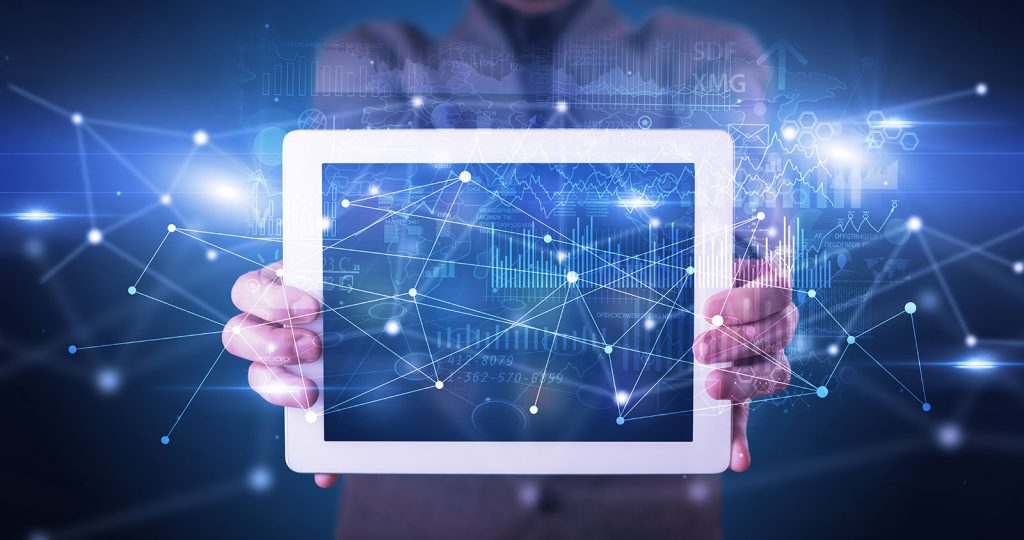
6. Green Banking Initiatives
As the world shifts toward sustainability, the banking sector is embracing eco-friendly practices through green banking initiatives. These efforts are not only transforming traditional banking but are also being integrated into mobile app development, offering users environmentally conscious financial solutions. Green banking apps are designed to promote sustainable practices, reduce carbon footprints, and empower users to make eco-friendly financial decisions.
Benefits
- Promoting sustainable financial practices. Green banking apps offer users environmentally responsible investments, such as green bonds. They also provide tools to track the environmental impact of spending and investments.
- Reducing waste. By digitizing banking processes, such apps reduce paper waste and contribute to a greener planet.
- Encouraging eco-friendly transactions. Green banking apps often include features like carbon footprint calculators, rewards for sustainable purchases, and partnerships with eco-conscious businesses, motivating users to adopt greener habits.
Implementations
- Green banking encourages digital-only banking solutions. This means they have no physical branches and all operations from opening an account to managing the transactions are digitized.
- “Green” investment portfolios are also something that green banking pursues. Users are exposed to investments in renewable energy, sustainable agriculture, and other green sectors. This allows users to grow their funds while supporting the environment — as the clients of Tomorrow Bank do.
7. Wearables as Control Hubs of IoT Ecosystems
Wearable technology now plays a significant role in our day-to-day life. They ensure a seamless transition from one device to another and provide real-time analysis. Smartwatches, fitness bands, and advanced smart jewelry are no longer just accessories — they serve as control hubs that allow users to manage a network of smart devices, apps, and services.
Benefits
- Centralized control of all connected devices. Wearables act as command centers, allowing users to control smart home appliances, lighting systems, and security cameras directly from their wearables.
- Personalized user experience. By analyzing user data, wearables and connected apps can offer tailored recommendations, whether it’s a customized workout plan, a reminder to stay hydrated, or a suggestion to adjust room temperature via a smart thermostat.
Implementations
- Wearables are used more and more for different productivity services. They can automate and speed up tasks by providing quick access to calendars, task reminders, and communication tools.
- With smart-home integration, wearables become a real home-control hub. Users can control internal lights or security systems through voice and touchscreen.
8. Biometric-Based Personalization
Biometric authentication no longer seems like a shocking technology. However, biometrics are now used to reach unimaginable heights of personalization. This technology not only enhances app security but also delivers a seamless and personalized user experience. With biometrics becoming a standard feature in modern smartphones, app developers are increasingly integrating these capabilities into their solutions.
Benefits
- New levels of personalized experience. By integrating biometric data, apps can tailor experiences to individual users. For example, a fitness app can automatically load a user’s profile and preferences upon facial recognition, creating a more engaging and customized interface.
- Increased user convenience. Biometric authentication replaces complex passwords or physical keys. Instead, users can quickly access their accounts or authorize transactions with just a touch, glance, or voice command.
- Unmatched security level. Fingerprint scanning or speech recognition offer a higher level of security compared to traditional passwords. Since biometric data is unique to each individual, it is almost impossible to forge.
Implementations
- Voice, face, iris, and fingerprint recognition are the most common implementations for biometrics. They ensure unparalleled security of personal data and allow the device to “recognize” its owner.
- The newest trend in this field is behavioral biometrics. This technology identifies people not by the way they look, but by the way they do things. These can include typing patterns, control of touchscreens, swipe gestures, or keystroke dynamics.
9. Voice-activated Services for Busy Lifestyles
No longer a novelty, voice-activated services certainly suit people with busy lifestyles. They use Natural Language Processing (NLP) and voice recognition to understand and respond to voice commands. Users are empowered to perform tasks, access information, and control devices with no extra effort.
Benefits
- Touchless UI. Voice technology allows users to interact with apps while multitasking (when they are driving, cooking, or working out). This hands-free functionality enhances convenience and productivity.
- Faster task completion. Using voice commands can seriously decrease the time needed to complete some tasks — searching, navigating, or controlling devices.
- Quick integration with smart devices. Voice-activated services often integrate with IoT ecosystems. This connection enables users to control smart home devices, play media, or manage schedules through one app.
Implementations
- The most common use case for voice-activated devices is voice assistants. Integration with Siri, Google Assistant, or Alexa allows users to perform actions, search online, and more using the power of voice.
- Voice-controlled smart home apps are at the intersection of IoT and voice-control technology. Users can simply say, “Turn off the lights” or “Increase temperature” to manage their home environment.
- A voice-user interface (VUI) enables users to utilize apps just with the help of voice commands. For instance, a fitness app might allow users to start a workout, track progress, or adjust settings using only their voice.
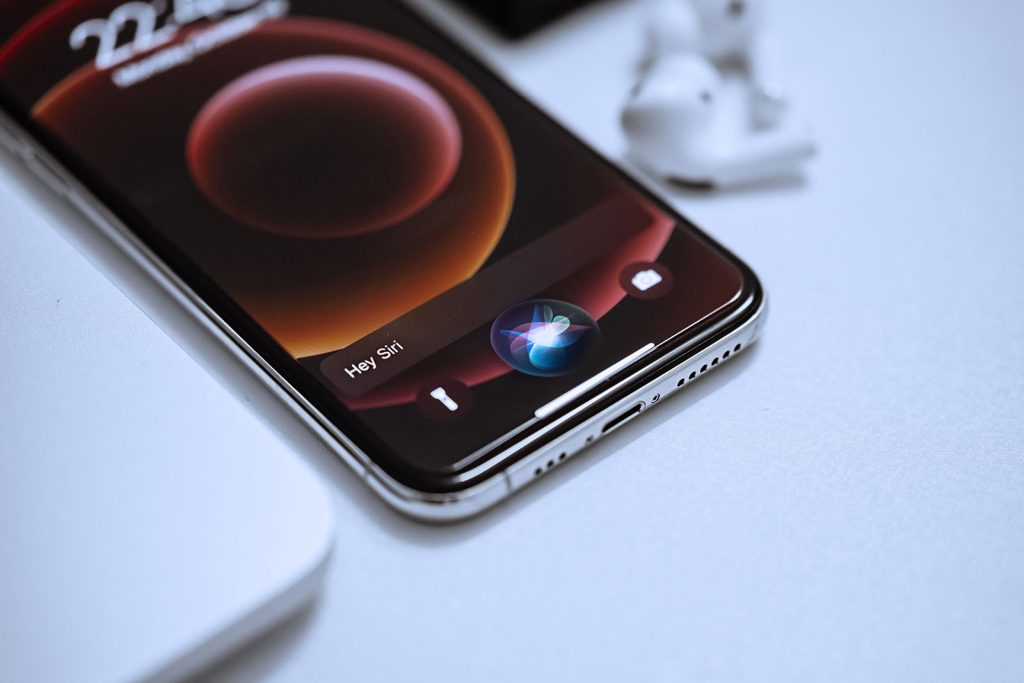
10. Enhanced Security with Zero-Trust Architecture and Blockchain
Nowadays, when cyber threats and attacks are becoming more and more common, enhanced security is in great demand. Zero Trust Architecture and Blockchain are among a few technologies that can increase security in mobile app development. ZTA follows the “never trust, always verify” principle. It ensures that every user and device is authenticated and authorized for accessing a certain type on data. Meanwhile, a decentralized and distributed ledger system called Blockchain provides transparency, immutability, and security for data and transactions.
Benefits
- Unparalleled level of data security. ZTA ensures that no user or device is granted access without serious verification, which significantly reduces the risk of unauthorized access. Blockchain adds an extra layer of security by encrypting data and storing it across a decentralized network.
- Transparency and traceability. Blockchain’s distributed system allows every transaction or data entry to be recorded and verified across multiple nodes. This transparency ensures that all actions are traceable and invulnerable.
Implementations
- Blockchain-powered DeFi apps give users access to lending, borrowing, and trading without relying on banks. They ensure secure, transparent, and efficient transactions with no intermediary.
- Cryptocurrency wallets and transactions using Blockchain can serve as secure wallets for storing and managing cryptocurrencies.
- One of the most reliable implementations of these technologies is smart contracts. They ensure fulfillment of obligations by both sides of the contract and can automate recurring payments like rent.
11. Beacon Technology
Beacon technology continues to transform how companies and users interact in physical spaces. These wireless devices transmit signals from smartphones to nearby businesses, which can collect, store, and use the consumer’s data for more targeted advertising. If you’re on the way to a certain store and there’s a sale going on, the beacon will make sure you will see the offer on your smartphone.
Benefits
- Hyper-personalized experiences. Beacons enable apps to deliver contextually relevant content, offers, or notifications based on a user’s precise location. This is why all the offers you get will be highly personalized.
- Offline data exchange. Unlike GPS, which relies on satellite signals, beacons work offline using BLE. This makes them ideal for indoor environments where GPS signals are weak or unavailable.
- Efficiency for business. Beacons help businesses gather valuable data on customer behavior (foot traffic patterns and dwell times). This information can be used to optimize store layouts, improve marketing strategies, and perfect overall operations.
Implementations
- Retail and marketing are the fields that benefit the most from this technology. They use it to send personalized offers and product recommendations to shoppers or notify customers about flash sales.
- Beacons in smart cities and public spaces allow users to receive real-time information, such as bus schedules, event notifications, or historical facts about landmarks.
12. New Design Opportunities for Foldable Apps
Foldable devices, although still not that common, offer certain benefits that regular devices don’t. Companies like Samsung, Huawei, and LG are driving this innovation, making it accessible to users. As this trend unfolds, app developers have a unique opportunity to create solutions tailored to the features of foldable smartphones. Over the next few years, apps that adapt to foldable displays are likely to become a standard, and nearly every mobile application will incorporate technology to optimize layouts and functionality for these devices.
Benefits
- Increased productivity and multitasking. Foldable devices provide a larger screen and more versatile use, enabling users to perform multiple tasks simultaneously. Apps can use this capability to offer split-screen views, seamless app switching, and advanced multitasking features.
- Immersive user experience. The expanded screen size of foldable devices allows for more engaging and immersive content consumption. Apps can utilize the additional space to deliver better visuals, interactive elements, and innovative navigation.
- Adaptable and flexible design. Foldable devices introduce a new dimension of adaptability. Apps can dynamically adjust their layouts, content presentation, and functionality based on the folded or unfolded state of the device.
Implementations
- Seamless app continuity across folding states is a key characteristic of such devices. For instance, a video streaming app could automatically resize and reposition content when the device is folded or unfolded.
- Apps for foldable devices are ideal for multitasking. They can capitalize on this by enabling split-screen views or allowing multiple app instances to run simultaneously. For example, a productivity app could let users view a document on one side of the screen while taking notes on the other.
13. Gamified Experiences
Gamification integrates game-like elements (challenges, rewards, and leaderboards) into non-game contexts to make tasks more enjoyable and increase user participation.
Benefits
- Enhanced user engagement. Gamification is an effective approach to garnering users’ attention and driving engagement, ultimately leading them toward completing desired actions.
- Improved user retention. It increases gaming app retention rates by inspiring user engagement and fostering loyalty.
Implementations
- Language learning apps. By incorporating badges or levels, language learning apps can make the process more enjoyable and motivate users to progress.
- Productivity apps. Gamification can turn tasks and goal completion into a game, making them more engaging and encouraging users to be more productive.
- Gamified experiences in fitness and wellness apps, such as earning points for completing workouts, can motivate users to stay active and maintain healthy habits.
14. Cloud-Based Testing
Cloud-based testing involves utilizing remote servers and infrastructure to perform testing, debugging, and monitoring in full-cycle mobile app development. It eliminates the need for local testing resources and provides a scalable and efficient environment for app development.
Benefits
- Testing on diverse environments. Cloud computing platforms allow testing on various devices, operating systems, and network conditions, confirming app compatibility and functionality in different scenarios. Android users cannot complain about being left behind using beta apps.
- Scalability and faster testing cycles. With cloud-based infrastructure, app testing can be scaled up or down based on demand, enabling shorter testing cycles and reducing time to market.
- Real-time monitoring and issue resolution. Cloud computing offers real-time monitoring of app performance, crash reports, and debugging tools, allowing developers to identify and resolve issues promptly.
Implementations
- Leveraging cloud-based testing platforms. Developers can use cloud-based testing services that provide a wide range of virtual devices and environments for comprehensive app testing.
- Real-time monitoring and crash reporting. Mobile apps can integrate with cloud-based services that monitor app performance, crash analytics, and error reporting for effective debugging.
- Collaborative debugging and streamlined bug tracking. Cloud-based platforms facilitate collaboration among developers, allowing them to share debugging information, track bugs, and resolve issues efficiently.
15. Low-Code/No-Code Development
Low-code and no-code platforms enable people create software with minimal or no coding knowledge at all. They offer intuitive drag-and-drop interfaces, pre-built templates, and visual development tools that simplify the process and take the development burden off users’ shoulders. Thus, mobile app creation gets accessible to a broader audience, reducing reliance on IT teams.
Benefits
- Faster development cycles. Low-code/no-code platforms significantly reduce the time required to build and deploy applications. This enables businesses to respond quickly to market demands and changing requirements.
- Cost efficiency. Such platforms allow almost everyone to create their own app or a website with the need to engage the whole development team.
- Accessibility. Low and no-code tools can be mastered quite easily, so non-tech-savvy users can actively participate in the app development process, fostering collaboration between IT teams and stakeholders.
Implementations
- Low- and no-code platforms enable users to create personal websites or business landing pages. It’s a great way to save costs for small businesses or beginning entrepreneurs.
- Low-code/no-code tools are ideal for automating workflow, including repetitive tasks, such as data entry, approval processes, or report generation, improving efficiency and reducing manual errors.
- Such platforms can be used for prototyping and creating MVPs. Startups and entrepreneurs can use them to test concepts and ideas before investing in full-scale development.
16. Extended Reality (XR) Applications
Extended Reality blends physical and virtual worlds and can be used to create “multidimensional” products that truly immerse users. It offers innovative ways to engage users, enhance productivity, and create complex solutions.
Benefits
- Immersive user experiences. XR technologies create highly engaging and interactive environments. This allows users to experience content in a more meaningful and memorable way.
- Offers a new marketing approach. XR can be utilized to create immersive marketing campaigns, allowing customers to interact with products or services in innovative ways.
Implementations
- XR is commonly used in gaming and entertainment. VR headsets like Meta Quest and AR games like Pokémon GO can create truly immersive worlds and interactive experiences.
- The second use case for XR is education. This technology provides a precise, simulated, and risk-free environment for studying. Students can explore historical sites, conduct virtual science experiments, etc.
- Real estate enables virtual property tours and 3D architectural visualizations. This allows clients to explore spaces before they are built or visit properties remotely.
17. mCommerce for Seamless Shopping
Mobile commerce refers to the buying and selling of goods and services through mobile devices. It has already become a cornerstone of modern retail, offering consumers the convenience of shopping anytime and anywhere.
Benefits
- Convenience and accessibility. mCommerce allows users to shop from anywhere at any time using just their phones. This eliminates the need to visit physical stores or even use desktop computers.
- Faster transactions. One-click mobile payments, digital wallets, and biometric authentication simplify the checkout process, which reduces cart abandonment rates.
- Personalized shopping experiences. Mobile platforms for iOS and Android enable businesses to collect user data and offer personalized recommendations, promotions, and content to enhance customer satisfaction.
Implementations
- Using GPS, businesses can send targeted location-based offers to customers when they are nearby, driving foot traffic and sales.
- AR technology allows customers to visualize products in their own environment before buying. For instance, beauty brands like L’oreal or NYX use AR to let customers try on makeup virtually.
- Mobile apps can incorporate gamified elements, such as reward points, spin-the-wheel discounts, or loyalty programs, to make shopping more engaging.
18. Metaverse Integration
The metaverse is a virtual universe where users interact in a digital environment. Businesses can integrate this technology into their apps and services to create an immersive and engaging interaction. Metaverse can be used in various settings and fields, creating an unforgettable experience for users.
Benefits
- Immersive user experiences. Users can interact with 3D content, explore virtual worlds, and engage with others in real time in highly immersive environments.
- New revenue streams. Businesses can monetize virtual goods, services, and experiences, such as virtual real estate, digital fashion, or in-game assets, creating new growth opportunities and make the most of their marketing strategies.
- Global accessibility. Users from around the world can participate in events, collaborate, or shop in a shared virtual space.
Implementations
- Companies can host virtual events, trade shows, or conferences in the metaverse. They can offer attendees an immersive experience with interactive activities, networking zones, and live presentations.
- Metaverse platforms like Microsoft Mesh and Meta’s Horizon Workrooms enable remote work and collaboration. Teams can collaborate in virtual offices, which can foster a sense of presence among remote workers.
- The metaverse can be used for virtual therapy sessions, medical training, or patient support groups, providing accessible and innovative healthcare solutions.
19. Gen AI Algorithms for Improved Productivity of Development Teams
Generative AI models like OpenAI’s GPT and GitHub’s Copilot can change the development completely. They can already generate code, suggest optimizations, and even assist in debugging. This enables developers to focus on higher-level problem-solving and innovation. By integrating Gen AI into the development process, teams can achieve better efficiency, reduce errors, and deliver high-quality solutions faster.
H3: Benefits
- Accelerated development cycles. Gen AI allows for more efficient code development. It can automate code generation, reduce the time to build and deploy applications and enable teams to meet tight deadlines.
- Consistent code quality. Such tools can analyze code for errors, suggest optimizations, and ensure adherence to best practices. This results in cleaner and more efficient codebases.
- Cost efficiency. Automating repetitive tasks and reducing development time lowers operational costs so that more resources can be allocated for marketing or support purposes.
Implementations
- The first use for such tools is code generation. GitHub Copilot can suggest code snippets, autocomplete functions, and even generate entire blocks of code.
- AI algorithms can analyze code to identify potential bugs or performance issues, providing developers with actionable insights into resolving problems quickly.
- Gen AI can analyze existing code and suggest refactoring opportunities or performance optimizations, helping teams maintain clean and efficient code.
20. Inclusive App Design
Inclusive app design is certainly not the newest of mobile app development trends. Making apps and services accessible to all categories of users is a must. No matter their demographics, abilities, language, or technological proficiency, all users should be able to benefit from different services. And it is the business’s job to make sure their app works for people of all walks of life.
Benefits
- Larger user base. Inclusive design ensures that apps are accessible to a wider audience, including older adults or and non-native language speakers. This increases the app’s potential market reach.
- Improved user experience. Inclusive apps provide a seamless and intuitive experience for all users, leading to higher satisfaction.
- Legal and regulatory compliance. Inclusive design helps digital products meet accessibility standards and regulations, such as the WCAG or the ADA, which is a decisive factor in making apps available on the major app stores.
Implementations
- Multilingual support is key to ensuring that non-native speakers can use the app comfortably. It is a good practice to use localization that goes beyond translation but incorporates cultural nuances and regional preferences.
- Customizable user interfaces. Users can adjust various components of the interface, including font sizes, color contrasts, text layout, dark/light modes, etc., to make their experience more enjoyable.
- Integrating voice commands and gesture-based interactions to help users with limited mobility. For instance, voice assistants like Siri or Google Assistant enable users to interact with apps without typing and significantly reduce distractions for drivers.
Consider Weelorum as Your Guide to Mobile App Development Trends
We know that our development team will build you a great app that incorporates the latest trends because:
- Not only do we follow the innovations introduced by Apple and Google (as major mobile market players), but we also join their early access for developers programs to try new products and features. Customers eager to try new features first can benefit from this.
- We were among the first teams who had started using JetPack Compose UI for Android, which helps with native UI building and saves time on UI-related tasks.
- Our designers, developers, and QA regularly attend conferences, new product presentations, and educational courses. Thus, we offer our customers the most up-to-date development solutions.
- We are working on innovative products ourselves, so besides having a product-oriented mindset, we develop and test a lot. One of our products will be launched for the wellness market soon and present a new way of managing healthy habits.
- Our decisions are based on data and understanding of the market trends. We believe this is how product development should work.
Partnering with us means gaining access to a team of experienced developers. We have been successfully integrating modern trends in mobile solutions:
- Jon D. Rock — thanks to AI algorithms, the app can offer portfolio allocations, provide users with automatic emergency fund levels, and create savings plans. Users will get long-term life goals — for 5, 10, or 30 years.
- Swim-Wise — this swimming AI mentor can analyze each swimming session and provide valuable insights. It will track strokes, suggest improvement techniques, and evaluate swimmers’ performance.
- Botigy — this app enables anyone to teach AI-powered bots to understand their surroundings. Snap photos, label them, and make your bot smarter with every new shot.
Drop our support team a line, so we can offer you our high-end dev services and any accompanying assistance
Contact usFAQ
What are the most promising current trends in mobile app development?
Among the most promising trends, we can certainly list AI and ML, which enable high-level personalization and automation, among other things. XR technologies are definitely in the run, transforming industries like gaming and retail. High security and decentralization are critically important nowadays as well, meaning ZTA and Blockchain are also here to stay.
What app development trends are underrated?
Voice technology and low-code/no-code platforms seem underrated, although they simplify life and allow non-developers to create products quickly. Wearable app integration is also often overlooked, but it plays a crucial role in health and fitness tracking. Beacon technology is so deep in marketing and advertising, however, we don't see a big surge of associated solutions.
Which of the latest trends in mobile app development will be soon irrelevant?
Most likely, irrelevant will become trends that bring users and businesses little to no value, or the ones that are superseded by newer technologies and better solutions. For example, single-platform apps that were once commonly used are now losing relevance. That’s why the developer community is now shifting to cross-platform frameworks (Flutter or React Native).
